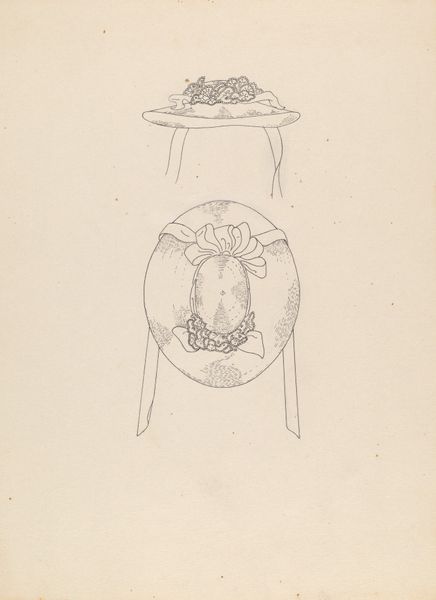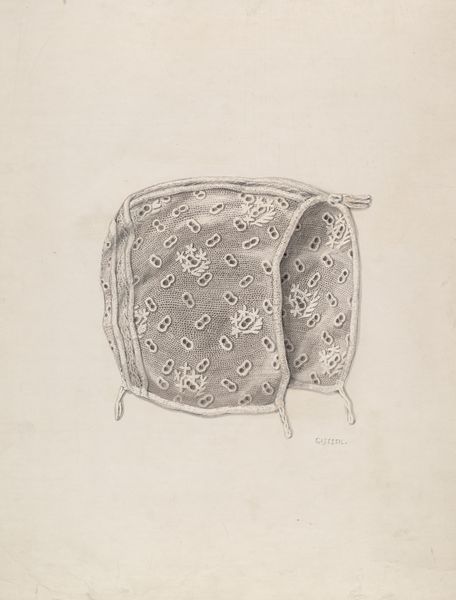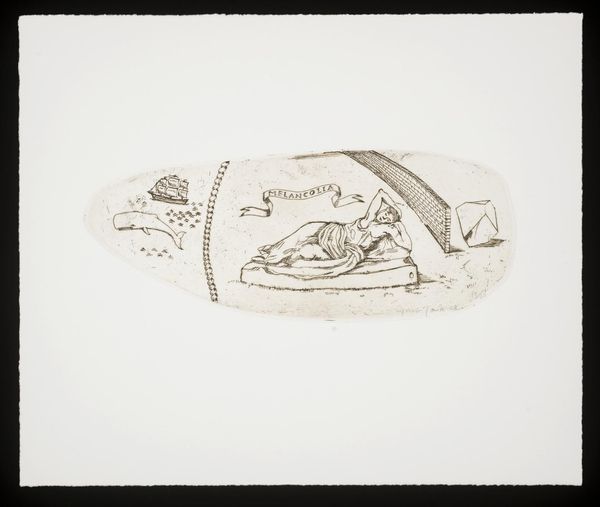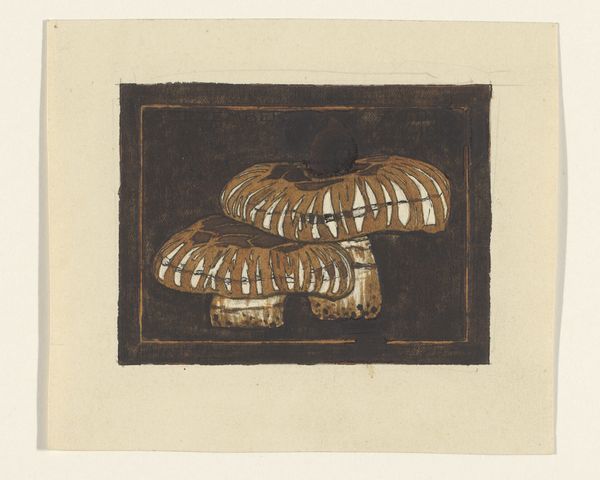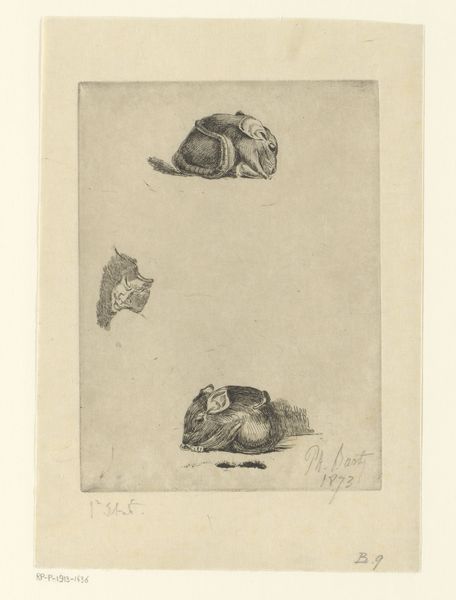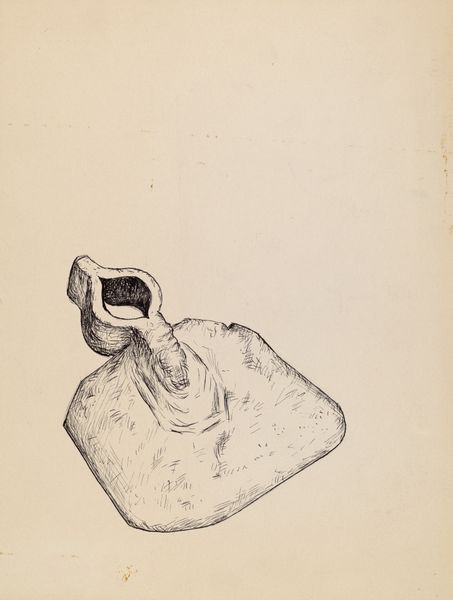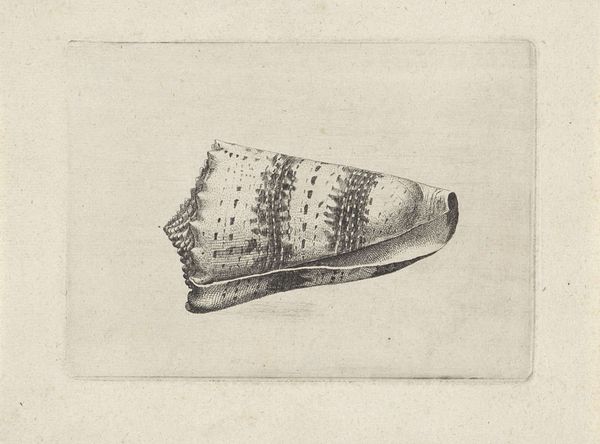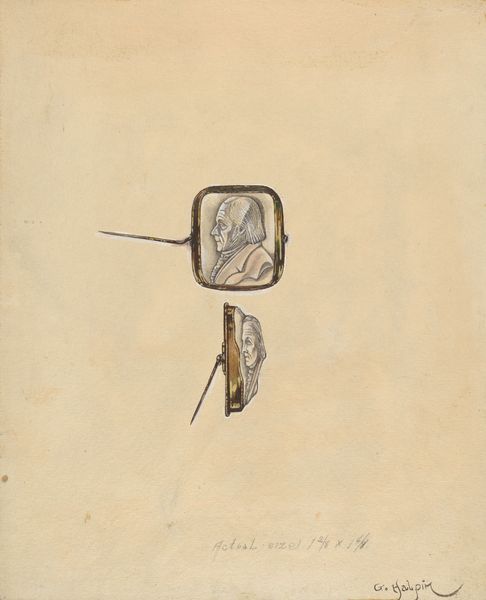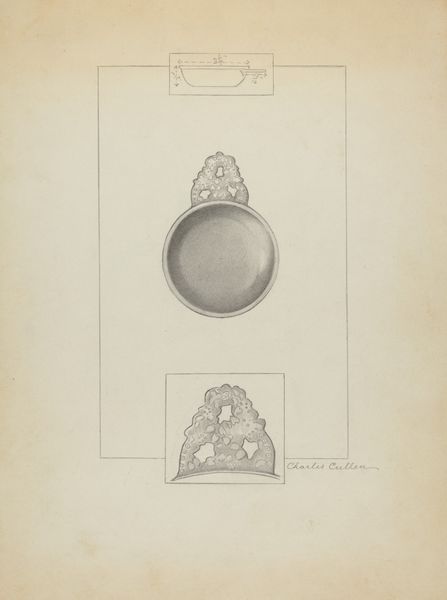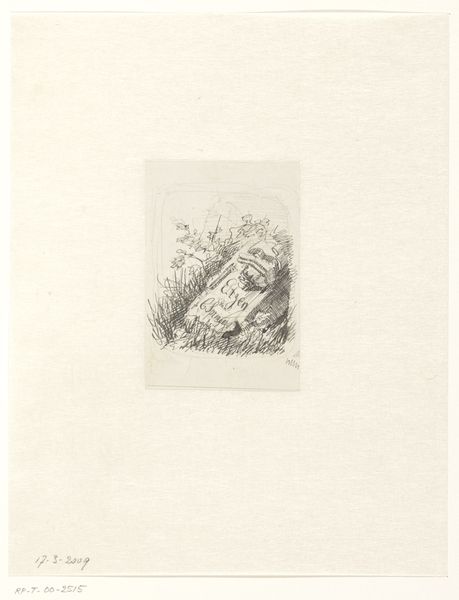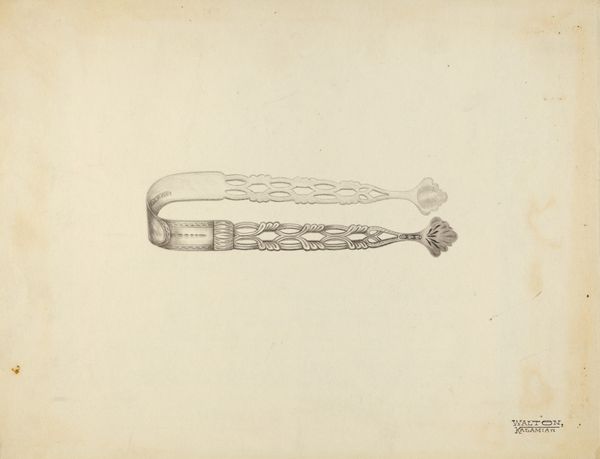
drawing, print, intaglio, engraving
#
drawing
# print
#
intaglio
#
old engraving style
#
geometric
#
engraving
Dimensions: height 38 mm, width 34 mm
Copyright: Rijks Museum: Open Domain
Editor: So, here we have Lucas Kilian's "Nier" created sometime between 1589 and 1637. It's an intaglio engraving, which gives it this very precise, almost scientific feel. It looks like, well, two potatoes. But there’s something very deliberate about how they’re presented. What do you see in this piece, considering the historical context? Curator: What strikes me is the choice of subject. In a time dominated by religious and aristocratic portraiture, here's a humble potato, elevated to the level of art. It begs the question, why? What socio-political statement might Kilian be making by depicting such an ordinary object? Consider the time period - what did it mean to represent something so common in a fine art form? Editor: It almost feels like a quiet rebellion, doesn’t it? Curator: Exactly! And this speaks volumes. Who consumes images, and what do those images tell us about power structures? What is Kilian trying to say about what - or who - is worthy of representation? Perhaps the mundane deserves the same meticulous attention as the monarch, subtly challenging societal norms. It's interesting how such a "simple" drawing could reveal such complexity. Editor: I see your point. I hadn’t thought of it as a statement about the value of ordinary things and people. Curator: The rise of still life, particularly "low life" still life in the Dutch Golden Age, comes to mind. This close study mirrors the emergence of empirical science; is it merely observation, or does it reflect a shifting worldview that acknowledges a broader base? The level of detail, achieved through the intaglio process, speaks to a commitment to representing reality - but which reality and whose? Editor: It definitely gives me a new perspective on the piece, thinking about the potential for challenging those power dynamics, even through a seemingly simple image. Curator: Precisely. Art is never created in a vacuum. Exploring the context can unlock narratives and open unexpected lines of inquiry.
Comments
No comments
Be the first to comment and join the conversation on the ultimate creative platform.
